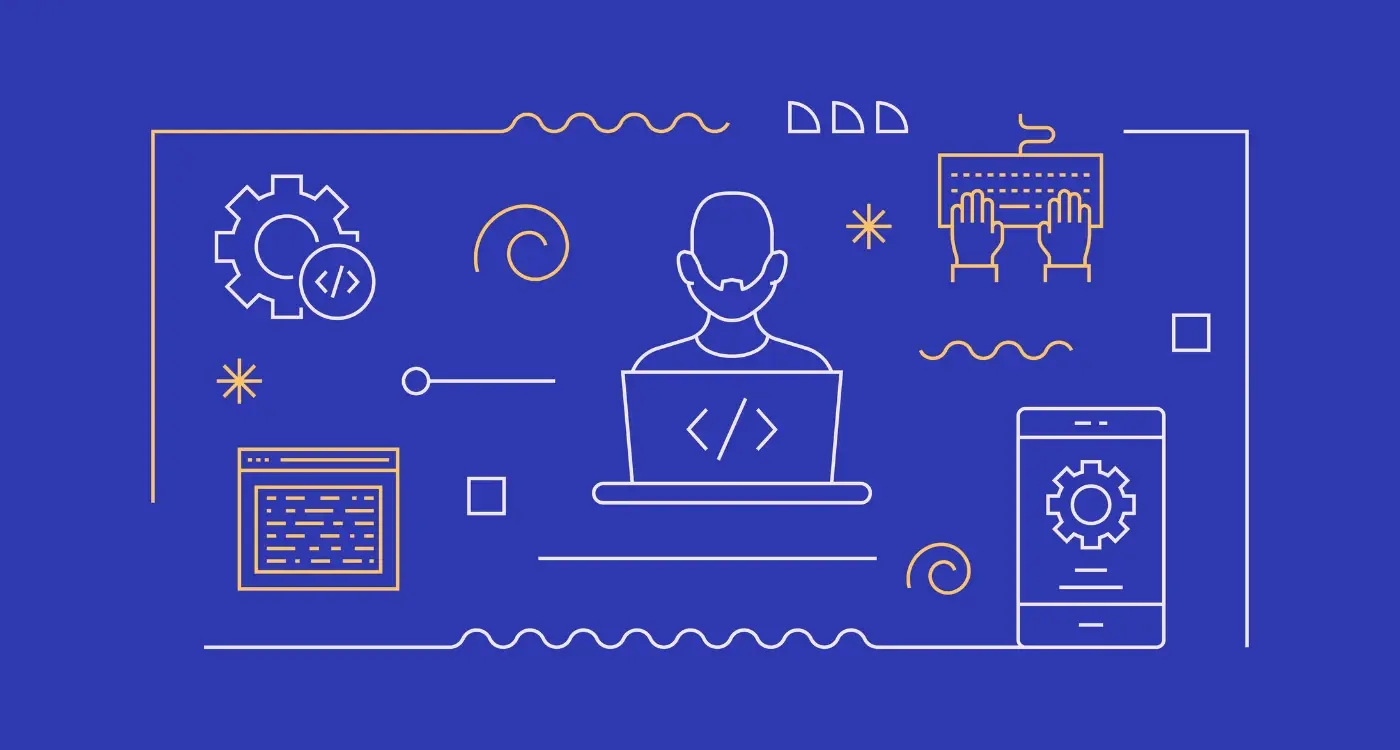What's The Best Way To Organise My App's Code Changes?
Did you know that 70% of mobile app projects fail because developers can't keep track of their code changes properly? It's a staggering number that highlights just how critical proper organisation is for mobile app development. When you're building an app, you're not just writing code once and walking away—you're constantly making tweaks, adding features, fixing bugs, and preparing updates. Without a solid system to manage all these changes, things can go wrong very quickly.
Think about it this way: every time you modify your app's code, you're creating a new version. Maybe you fixed a crash on Android phones, or perhaps you added a new login feature. Each change needs to be tracked, tested, and potentially rolled back if something breaks. This is where version control becomes your best friend—it's like having a detailed history of every single change you've made to your mobile app.
The best time to set up proper version control is before you write your first line of code, not after your app breaks in production
Throughout this guide, we'll explore the development best practices that will help you organise your app's code changes like a pro. From setting up your tools to managing team collaboration, you'll learn the techniques that separate successful mobile app projects from the ones that end up in the failure statistics.
Understanding Version Control for Mobile Apps
Right, let's talk about version control—something that sounds technical but is actually quite straightforward once you get your head around it. Think of version control as your app's memory system; it remembers every change you've ever made to your code. Every single line you've written, deleted, or modified gets stored safely so you can go back to any previous version whenever you need to.
I've worked on projects where developers were emailing code files back and forth (yes, really!) and let me tell you, that's a recipe for disaster. Version control systems like Git solve this problem by tracking all your changes automatically. When you're working on a mobile app, you'll be constantly tweaking features, fixing bugs, and adding new functionality—version control makes sure you never lose any of this work.
What Version Control Does For Your App
Version control systems offer several key benefits that make them indispensable for mobile app development:
- Tracks every change made to your code with timestamps and descriptions
- Allows multiple developers to work on the same project without conflicts
- Lets you revert to previous versions if something breaks
- Creates a complete history of your app's development
- Enables you to work on different features simultaneously
Without version control, you're basically flying blind. You can't see what changed between versions, you can't easily collaborate with other developers, and if something goes wrong, you're stuck trying to remember what you did last week. Trust me, your future self will thank you for setting this up properly from day one.
Setting Up Your Development Environment
Getting your development environment right is one of those things that can make or break your mobile app project—and I've seen teams struggle with this more times than I'd care to count! The good news is that setting up proper version control doesn't have to be complicated, but it does need to be done correctly from day one.
Choosing Your Version Control System
Git is the industry standard for version control, and for good reason. It's reliable, well-supported, and works brilliantly with mobile app development best practices. You'll want to pair it with a hosting service like GitHub, GitLab, or Bitbucket—these platforms make collaboration much easier and provide backup for your code.
When setting up your repository, create a clear folder structure that separates your source code, assets, and documentation. This organisation will save you headaches later when your team grows or when you're rushing to fix a critical bug.
Development Tools and Integration
Most modern development environments like Android Studio and Xcode have built-in Git support, which means you can manage your version control without leaving your coding environment. Set up your IDE to show file changes clearly and configure it to handle line endings properly—trust me, this prevents those annoying "everything changed" commits that don't actually change anything.
Create a .gitignore file specific to your platform before making your first commit. This prevents build files, temporary data, and sensitive information from cluttering your repository.
| Tool Type | Recommended Options | Key Features |
|---|---|---|
| Git Client | Built-in IDE, SourceTree, GitKraken | Visual diff, merge tools, branch management |
| Code Editor | VS Code, Android Studio, Xcode | Git integration, syntax highlighting, debugging |
| Hosting Platform | GitHub, GitLab, Bitbucket | Remote backup, collaboration, issue tracking |
Creating a Branching Strategy That Works
After years of working with development teams, I can tell you that a good branching strategy is what separates the pros from the amateurs. It's not just about keeping your code organised—it's about making sure your team can work together without stepping on each other's toes.
Think of branches as separate workspaces where developers can make changes without affecting the main code. Your main branch (often called 'main' or 'master') should always contain stable, working code that could be released at any time. This is your safety net.
Popular Branching Models
Most teams use one of these approaches:
- Git Flow: Uses separate branches for features, releases, and hotfixes—great for teams with scheduled releases
- GitHub Flow: Simple approach with just feature branches and main—perfect for continuous deployment
- GitLab Flow: Combines the best of both worlds with environment-specific branches
Setting Up Your Strategy
Start simple. Create a feature branch for each new piece of work, test it thoroughly, then merge it back to main when it's ready. Name your branches clearly—'feature/user-login' tells everyone exactly what you're working on.
The key is consistency. Once you pick a strategy, make sure everyone on your team follows it. Trust me, future you will thank present you for this discipline!
Managing Code Changes and Commits
After years of working with mobile app development teams, I've seen plenty of developers who treat commits like diary entries—writing vague messages that make no sense six months later. Your commits are the backbone of your version control system, and getting them right can save you hours of debugging headaches down the line.
Good commit messages should tell a story. Instead of writing "fixed bug" or "updated code", be specific about what you changed and why. Something like "Fixed crash when users tap submit button on login screen" gives your team (and future you) the context they need. Each commit should represent one logical change; don't bundle fixing a button colour with adding a new feature.
Writing Commits That Actually Help
Keep your commits small and focused. If you're tempted to use "and" in your commit message, you're probably trying to do too much in one go. Break it down into separate commits instead—your development best practices will thank you later.
The best commit is one that solves exactly one problem and explains why it was necessary
Before you commit, review your changes. Most version control systems let you stage specific lines of code, so you can commit related changes together whilst leaving unfinished work for later. This approach keeps your mobile app's history clean and makes tracking down issues much easier when things go wrong.
Collaborating with Your Development Team
Working with a development team can feel overwhelming at first—especially if you're not a technical person yourself. But here's the thing: good collaboration isn't about understanding every line of code; it's about creating clear processes that everyone can follow. I've worked with teams ranging from solo developers to groups of twenty, and the ones that succeed all have something in common: they communicate well and stick to their agreed processes.
The key is establishing who does what and when. Without clear roles, you'll end up with developers stepping on each other's toes, conflicting code changes, and frankly, a lot of frustrated people. Here's how we typically structure team responsibilities:
- Lead developer reviews and approves all code changes before they go live
- Each team member works on separate features in their own branch
- Nobody—and I mean nobody—pushes directly to the main branch without review
- Daily check-ins help catch problems before they become disasters
- Testing happens at every stage, not just at the end
Setting Up Review Processes
Code reviews aren't just about catching bugs; they're about knowledge sharing too. When Sarah reviews Tom's code, she learns his approach whilst helping spot potential issues. This creates a stronger team overall and means you're not completely stuck if someone goes on holiday. The review process should be thorough but not slow—aim for feedback within 24 hours so work doesn't grind to a halt.
Managing Conflicts and Merges
When two developers work on similar parts of the app, conflicts are inevitable. The secret is dealing with them quickly and systematically. Most version control systems will flag these conflicts automatically, but having a clear process for resolving them saves headaches later. We always test thoroughly after resolving conflicts because that's where sneaky bugs love to hide.
Handling App Updates and Releases
After years of working with development teams—some brilliant, some... well, let's just say they had room for improvement—I've learned that how you handle app updates can make or break your relationship with users. Version control isn't just about keeping track of your code changes; it's about making sure your mobile app releases don't turn into complete disasters.
The key is treating each release like a carefully planned event. You need a clear process that everyone on your team understands. Start by creating release branches from your main development branch—this gives you a stable foundation to work from. Tag each release with proper version numbers so you can easily track what went out when. Trust me, you'll thank yourself later when something goes wrong and you need to quickly identify which version caused the problem.
Always test your release builds on actual devices before pushing to the app stores. Simulators are great for development, but real devices will catch issues that simulators miss.
Managing Release Cycles
Most successful mobile apps follow a predictable release schedule. Whether that's weekly, bi-weekly, or monthly depends on your team size and app complexity. The important thing is consistency—your users and your development team both benefit from knowing what to expect. Keep your release notes detailed but readable; users actually do read them more than you might think.
Common Mistakes and How to Avoid Them
After years of helping teams organise their app code changes, I've seen the same mistakes crop up again and again. The good news? They're all completely avoidable once you know what to look for.
The Big Three Mistakes
The most common error I encounter is teams committing directly to their main branch without any testing. It's tempting when you're in a rush, but this approach will come back to bite you. Always create a separate branch for your changes, test them properly, then merge back.
Another frequent problem is writing terrible commit messages. Messages like "fixed stuff" or "updates" tell you nothing about what actually changed. Six months later, you'll be scratching your head trying to understand what that commit did.
- Never commit directly to main/master branch
- Write clear, descriptive commit messages
- Don't ignore merge conflicts—resolve them properly
- Avoid committing sensitive information like API keys
- Don't skip code reviews, even for small changes
Setting Up Safety Nets
The best way to avoid these mistakes is to set up systems that prevent them from happening. Use branch protection rules to stop direct commits to main; create commit message templates for your team; set up automated checks that scan for sensitive data before code gets merged.
Remember, everyone makes mistakes—but the smart teams are the ones who learn from them and put processes in place to prevent them happening again.
Conclusion
Right then, we've covered quite a lot of ground in this guide—from setting up your development environment to creating proper branching strategies and managing releases. After eight years of helping companies build mobile apps, I can tell you that getting your version control sorted isn't just about following best practices; it's about making your development life so much easier.
The truth is, most developers learn this stuff the hard way. They lose code, break builds, or spend hours trying to merge conflicting changes. But you don't have to go through that pain if you follow what we've discussed. Start with a simple branching strategy, keep your commits small and meaningful, and don't try to be clever with complex workflows until your team is ready for them.
Version control for mobile app development isn't rocket science, but it does require discipline. The teams that get it right ship faster, have fewer bugs, and can actually sleep at night knowing their code is safe. The ones that don't? Well, they're usually the ones calling us in a panic when something goes wrong! Take your time implementing these practices—your future self will thank you for it.
Share this
Subscribe To Our Learning Centre
You May Also Like
These Related Guides

What's The Difference Between Serverless And Traditional App Hosting?

What's the Difference Between App Versioning and Source Control?



